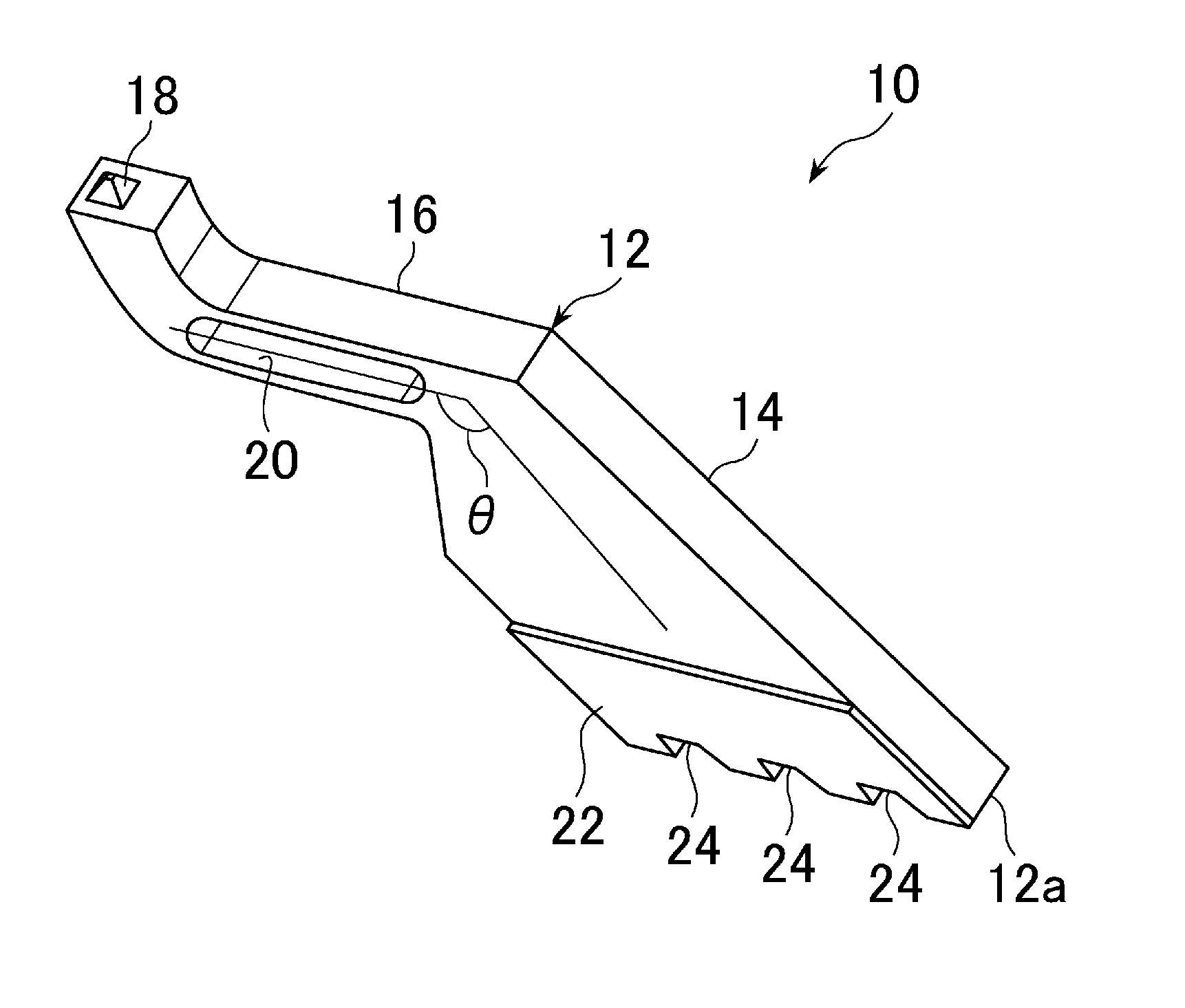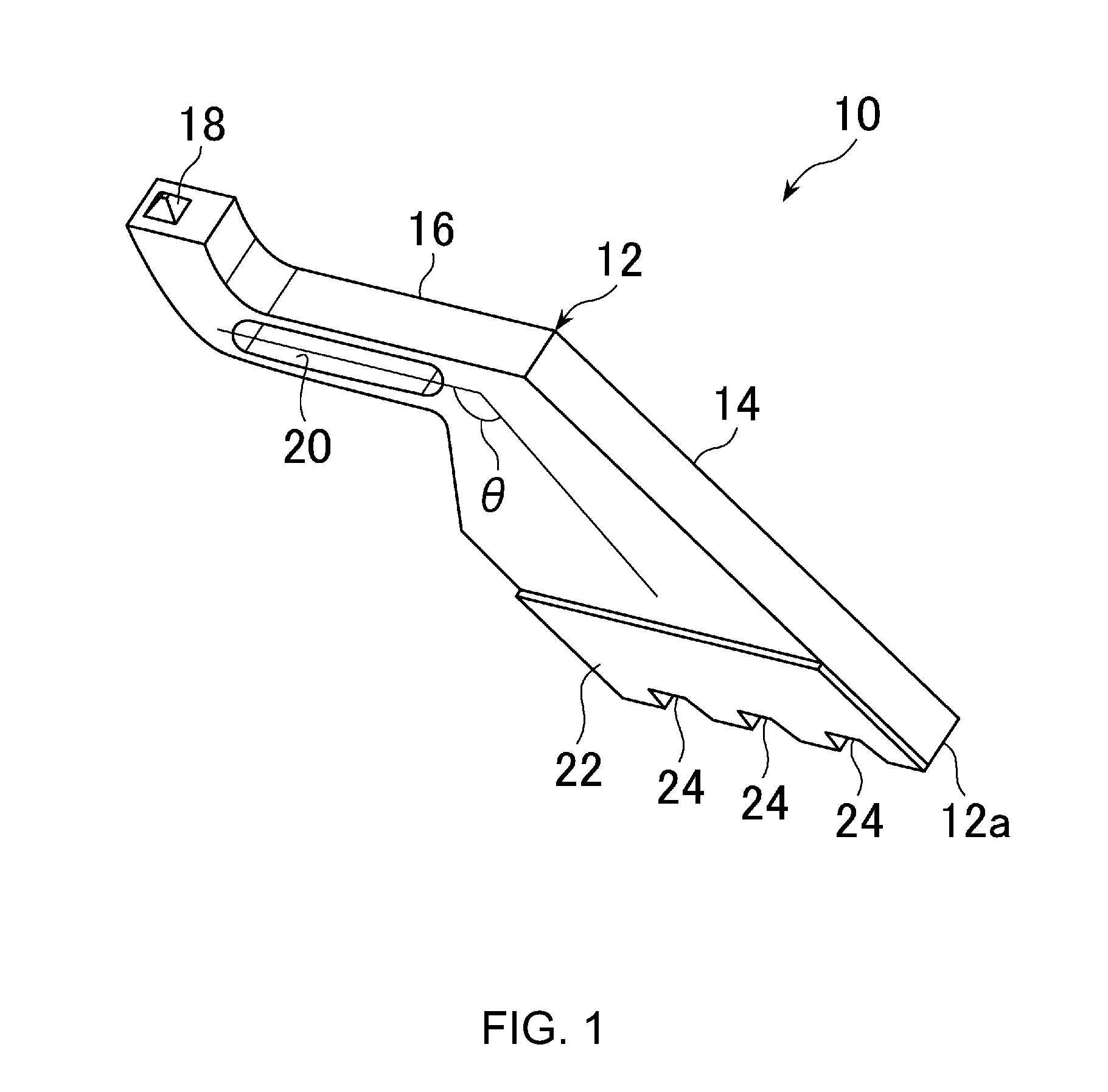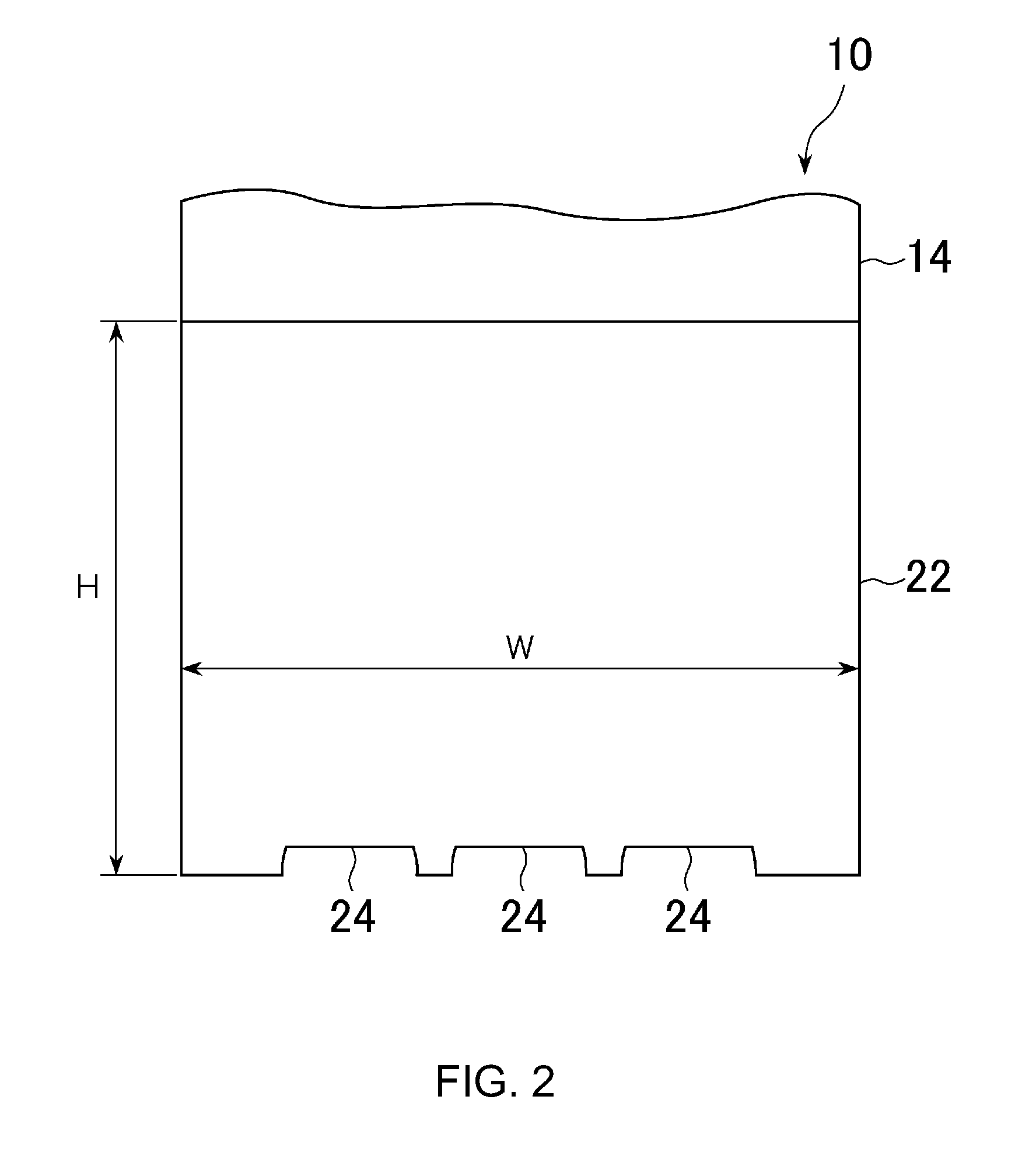Probe for current test, probe assembly and production method thereof
- Summary
- Abstract
- Description
- Claims
- Application Information
AI Technical Summary
Benefits of technology
Problems solved by technology
Method used
Image
Examples
Embodiment Construction
[0037]The probe 10 according to the present invention is, as shown in FIG. 1, provided with a generally plate-like probe body 12. The probe body 12 has: a flat rectangular end face 12a which is used as a connection face to a wiring path described later; a plate-like connection portion 14 rising angularly from the end face; and an arm portion 16 extending at an obtuse angle θ in a direction approximately parallel to the longitudinal direction of the end face 12a from the front end of the connection portion 14 on a plane including the connection plane to a wiring path to be described later. The front end portion of the arm portion 16 rises in a direction to be away from the end face 12a of the connection portion 14, and a tip 18 is formed at the front end face.
[0038]The probe body 12 except the tip 18 is made of a highly tough metal material such as, for example, nickel, its alloy or phosphor bronze. In the illustration, in order to enhance the flexibility of the arm portion 16, a lon...
PUM
 Login to View More
Login to View More Abstract
Description
Claims
Application Information
 Login to View More
Login to View More - R&D
- Intellectual Property
- Life Sciences
- Materials
- Tech Scout
- Unparalleled Data Quality
- Higher Quality Content
- 60% Fewer Hallucinations
Browse by: Latest US Patents, China's latest patents, Technical Efficacy Thesaurus, Application Domain, Technology Topic, Popular Technical Reports.
© 2025 PatSnap. All rights reserved.Legal|Privacy policy|Modern Slavery Act Transparency Statement|Sitemap|About US| Contact US: help@patsnap.com



